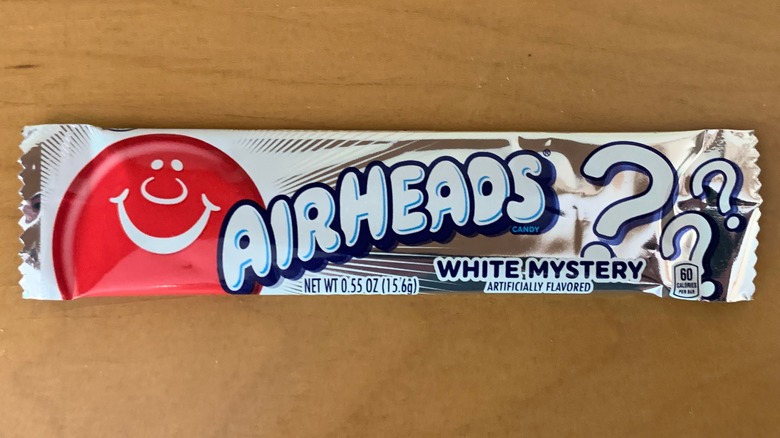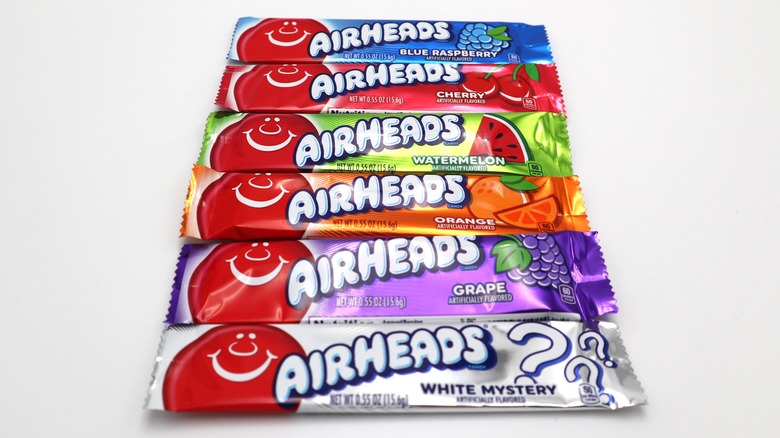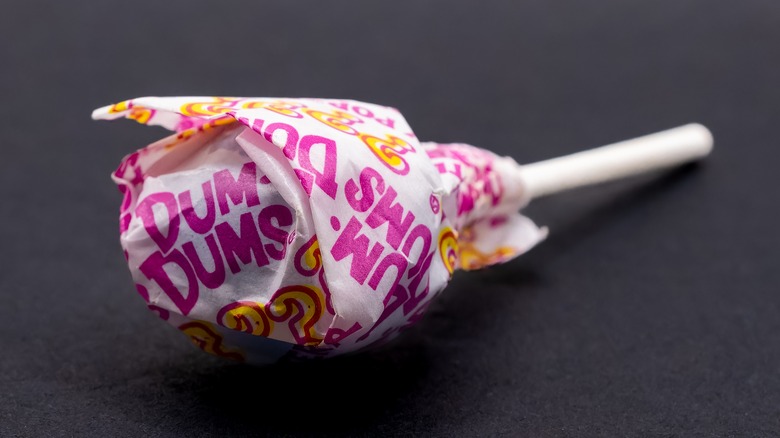What Flavor Is The White Mystery Airhead Anyway?
We may receive a commission on purchases made from links.
In the 1990s, snacks, soft drinks, and candy companies were all in their heyday competing for the attention of young folks around the country. You may remember the vibrant SoBe drinks that gripped the country for a spell, along with all the other snacks that were discontinued in the decade, but one confection made a name for itself and stood the test of time. It began one legendary day in 1993 when Airheads taffy turned the sweets world upside-down with a new flavor shrouded in secrecy — the White Mystery Airhead.
The silver and white packaged taffy dominated conversations around the candy aisle for years. Some kids were convinced the flavor was coconut, while others condemned that notion and fervently proclaimed it had to be grape. Everyone had a hunch as to what it could be, but because the taffy had no pigment to distinguish what it would taste like, all guesses were simultaneously accepted as plausible and mocked as ridiculous.
The truth is the colorless taffy combines two flavors of the iconic treat mixed into the same flat white bar. Typically, one product at a time is made in the Airheads factory. The machines get cleaned, and another flavor is produced the next day. Instead of resetting the machines, the factory runs another batch that picks up the residual flavor of the last. They skip adding the food coloring, and voilà, the White Mystery flavor is born — and it didn't start by accident.
The genius marketing idea was gifted to Airheads
As companies constantly scrambled to produce what they hoped would be the newest trend during the 90s, Airheads had the White Mystery flavor dropped into its lap. A brand manager at the company, Mathew Fenton, was pouring over data accumulated from young people when he stumbled upon a stroke of genius spawned from a teenager who wrote to him. Among other suggestions, the kid thought Airheads should come out with a mystery flavor in white packaging to disguise its true nature.
Fenton was inspired and soon started testing a prototype at a nearby elementary school. The children who tried it were enthusiastic about the candy, but only 5% of them could identify the flavor. Many fiercely declared they had it figured out, but the reality was almost none of them recognized what it was. Today, the taffy could taste like a mix between any two flavors — it changes all the time.
By withholding the identity of the flavor within this particular Airhead, a buzz took hold of young people, such that they had to get their hands on the mystery product to solidify their position that they had indeed figured it out. They were wrong on most occasions, but that didn't stop Airheads from capitalizing on the need for kids to try it again and again. The secret sweets were so successful it started a trend of other brands releasing "mystery" flavors of their products, attempting to profit from the same phenomenon.
Spawned an entire generation of mystery candy
As the saying goes, if you can't beat 'em, join 'em. That was the attitude of several companies after the Airheads White Mystery flavor took the country by storm when they began creating their own secret products within their respective brands. Starbursts came out with a secret flavor of its own a few years later that was also colorless, and Jones Soda eventually had a limited-edition mystery drink for fans to debate over.
A couple of decades after Airheads capitalized on the uncertainty, Taco Bell got in on the action. The Mexican fast food chain partnered with Airheads to create the White Mystery Airhead Freeze, a slushy-like beverage with a flavor unknown. Taco Bell leaned into the mystery theme by encouraging fans to try and guess what it tasted like on social media.
After 1993, the candy aisle in convenience stores was teeming with surprise and novelty items meant to reproduce the results Airheads White Mystery bars enjoyed. From DumDums mystery flavor lollipops to Bazooka brands Ring Pops and Kinder Surprise Eggs, which are banned in the U.S., companies were chomping at the bit to recreate Airheads' successful venture into the unknown. None of these companies have ever revealed what the true flavor of any one release was, and that's how it should be — guessing what you're about to taste is half the fun.


